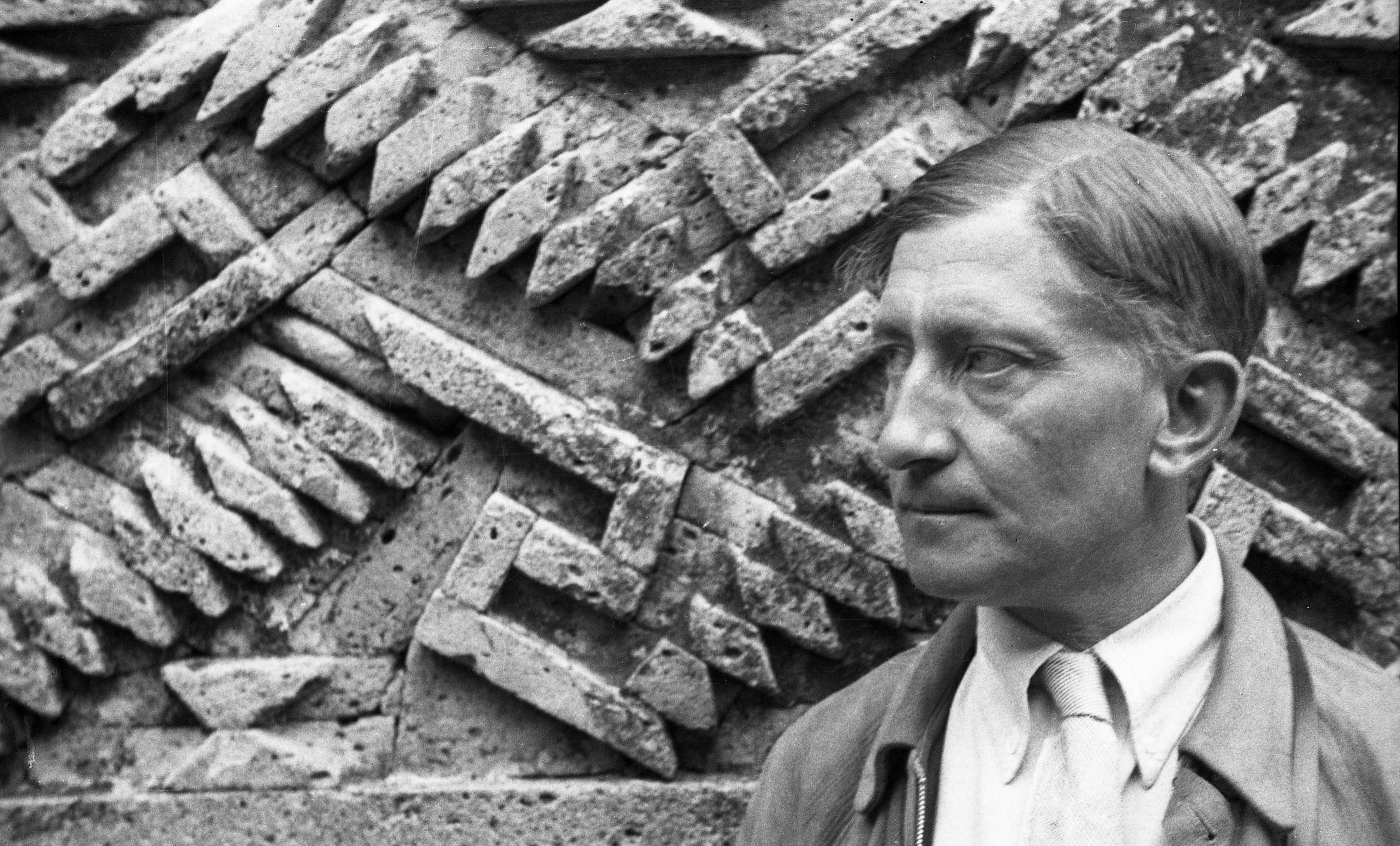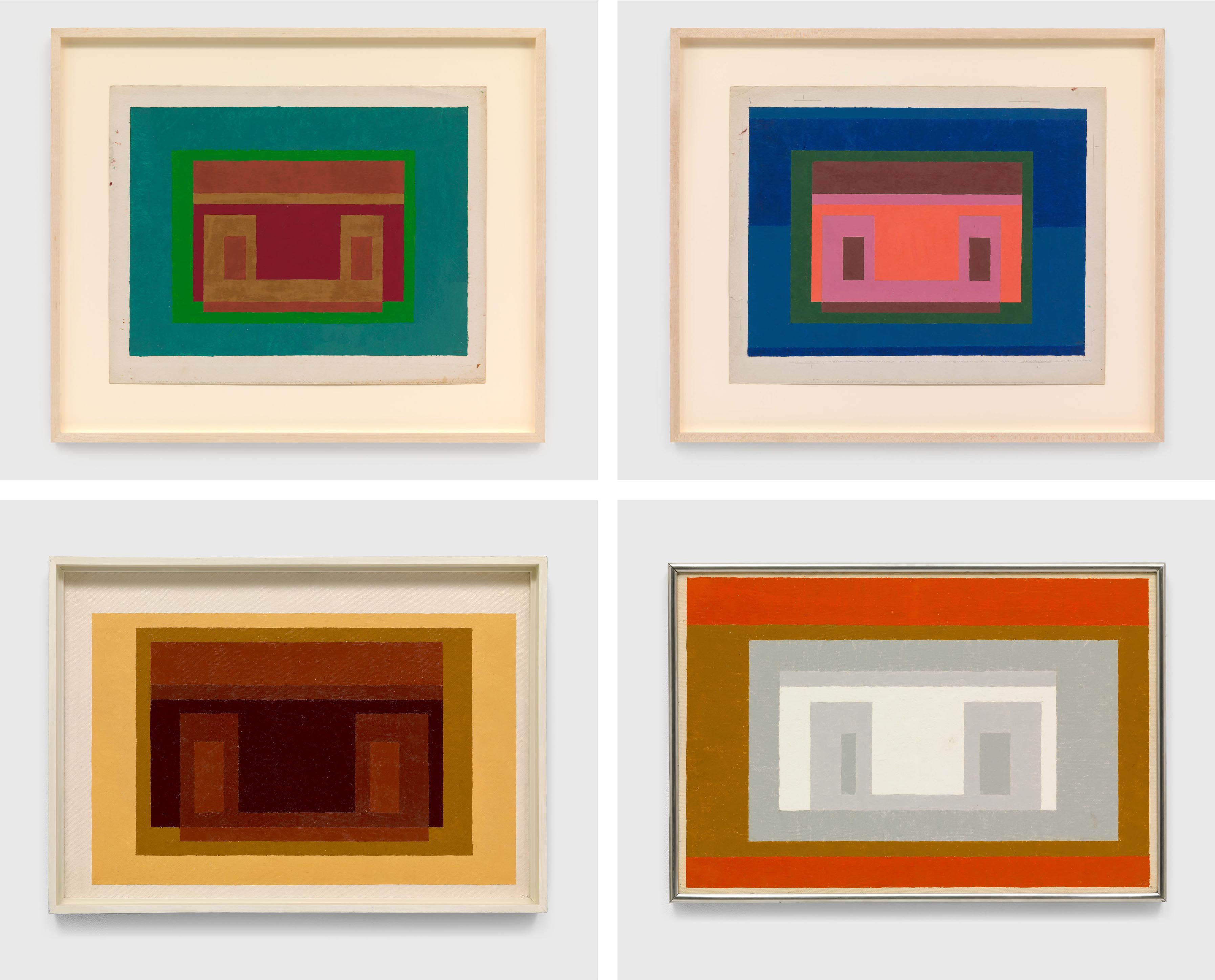
Josef Albers, Mitla, Mexico, 1936-37
Two exhibitions at the David Zwirner gallery in London - “Josef Albers: Paintings Titled Variants” and “Black Mountain College: The Experimenters” - take a deeper look at Albers’ work and life, concentrating in particular on the period that lead up to the start of his classic “Homage to the Square” series.
To help navigate just a few of the notable achievements of Albers’ long and highly influential career, we put a few questions to Nicholas Fox Weber, Executive Director of The Josef and Anni Albers Foundation about the man, the work, and his influence.
Can you tell us more about the works on display in “Josef Albers: Paintings Titled Variants” and how they fit into the arc of Albers’ artistic development?
This exhibition, in emphasizing Albers’s Variants, presents work from his first large series. In the 1930s, with his Treble Clefs, he had taken the idea of using a number of similar layouts with very different variations of color; now he went even further in using a carefully conceived geometric structure for a range of works in differing palettes. The Homages to the Square, which he began just a few years after he started the Variants, would be the summa of this approach.

We are especially interested by the “double-door” motif he uses and, if it is connected to a specific house, whether it represents a bridge to the abstraction of the subsequent “Homage to the Square” works?
The idea of the double-door Adobe house is by no means connected to a specific house, but to a generic sort of structure. Albers was intrigued with the indigenous architecture of the American southwest and Mexico, where the use of asymmetrical rectangular forms had great appeal to him and inspired him to refine the idea as pure abstraction, but these paintings should by no means be considered as literal representations. They paved the way for the Homages in part because the technique of applying paint straight from the tube directly onto a white support, with no overlapping of paintings, and the use of unmodulated color to create a series of illusions, was developed here.

Albers was a professor at the Bauhaus in Germany until it closed in 1933 under pressure from the Nazis. Alongside his wife Annie he then managed, with the help of the architect Philip Johnson, to move to the US and take the role of head of the then newly opened Black Mountain College art school.
Black Mountain College ran from 1933 to 1957 in North Carolina, USA. Like the Bauhaus the College was to prove highly influential, with teachers and students including luminaries such as Ruth Asawa, Walter Gropius, Cy Twombly, Robert Rauschenberg, Merce Cunningham, John Cage, Buckminster Fuller and Willem and Elaine de Kooning
Looking at the companion exhibition (“Black Mountain College: The Experimenters”), how was Albers influenced by his experiences at not one but two of the most renowned and revered arts education institutions in history?
Those institutions gave Albers a chance to work independently in the company of like-minded, sympathetic, and supportive people. They encouraged independence and experimentation. But he was adamant that they not be glorified; in both places, there were financial troubles as well as the complexities of internecine personal politics. Albers was grateful above all for the wherewithal to pursue his own work.
Arguably, Albers is now best known as a painter, however is it fair to say that he was equally influential both as an artist and as a teacher?
His influence as a teacher and writer is inestimable.
“Josef Albers: Paintings Titled Variants” and “Black Mountain College: The Experimenters” are on show at David Zwirner, London until April 15.
photo credits: © 2023 The Josef and Anni Albers Foundation/Artists Rights Society (ARS), New York/DACS, London; © The Josef and Anni Albers Foundation/Artists Rights Society (ARS), New York, Courtesy The Josef and Anni Albers Foundation and David Zwirner; Harvard Art Museums


